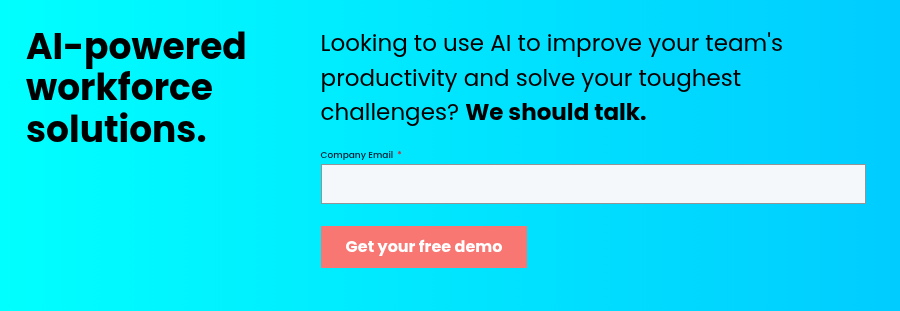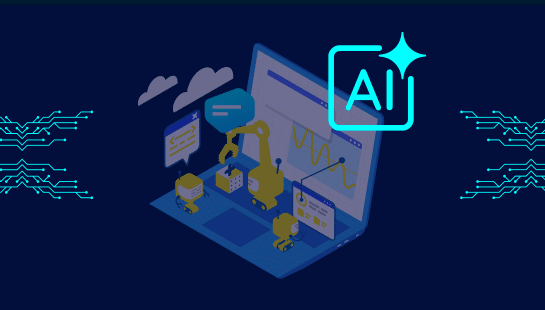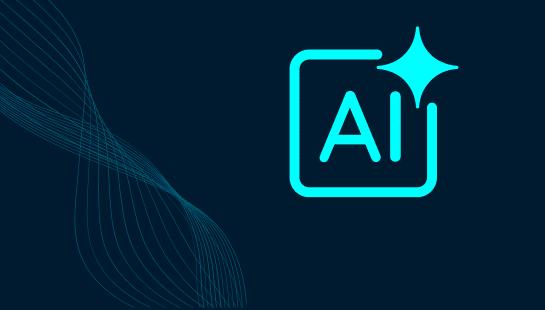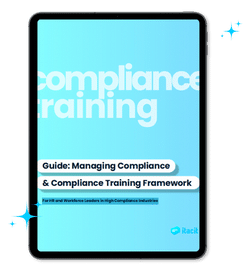AI workforce management will reshape about 800 million jobs worldwide by 2030. This big change isn’t a distant future scenario; it’s already happening. Recent studies show 71% of 500 surveyed companies aim to add AI among their human workforce rather than replace workers.
AI will increase or replace 14% of global jobs by 2025. Companies embrace this technology because it works. More than 60% of organizations now use AI to improve data analysis, support decisions, and streamline operations. Current data shows 77% of businesses actively use AI or plan to implement it. Larger companies adopt AI twice as fast as smaller businesses.
AI brings clear advantages to the workforce. McKinsey reports show how AI helps solve workforce planning challenges. It spots patterns and predicts needs through big data analysis. Office workers report better results too; 81% say their job performance improved after AI integration. AI-powered software helps optimize your workforce by matching the right people to the right roles at the right time.
Let’s take a closer look at AI workforce planning’s evolution toward 2025, from automated scheduling to customized employee experiences. You’ll find real-life applications like iTacit’s AI HR Assistant that handles routine questions. Their mobile-first workforce management software keeps teams connected. AI technology advances rapidly, and its effect on workforce management grows stronger each day.
The Shift from Traditional to AI-Driven Workforce Management
Traditional workforce management is becoming outdated faster than ever. 75% of civilian federal agencies continue to use legacy HR platforms that can’t support modern workforce needs. These old systems cost organizations more than USD 2.00 billion each year just in maintenance.
Manual Scheduling vs AI-Powered Automation
The difference between manual and AI-driven workforce management approaches keeps growing in 2025. Traditional scheduling still depends on spreadsheets, paper logs, and in-person meetings. This method might look simple and cheap at first, but it has hidden drawbacks.
Manual processes create major inefficiencies:
- Speed: Human dispatchers process information nowhere near as fast as AI systems that work in seconds
- Accuracy: Employee self-reporting of hours results in data errors
- Consistency: Human performance changes under stress, while AI delivers reliable results
- Scalability: Manual methods need almost twice the staff as workload grows
AI-powered workforce management brings a new level of automation and intelligence. AI scheduling cuts planning time by 40% and increases trip volume by 25%. It also handles data entry, scheduling, and invoicing tasks, so employees can solve complex problems.
AI workforce management tools make a remarkable difference. They implement advanced features that reduce human errors and optimize operations. To cite an instance, Zendesk’s AI-powered WFM offers quick insights about cost issues and ways to improve efficiency through workforce forecasting and scheduling.
Your workforce will need new skills as AI collaboration grows, with emphasis on technical and interpersonal capabilities. iTacit’s AI HR Assistant shows this transformation by handling routine HR questions and tasks. This frees up your human staff to tackle complex challenges. The AI assistant manages everything from policy questions to onboarding support, giving your HR team time to focus on strategic work.
Challenges in Legacy Workforce Planning Systems
Organizations that still depend on legacy workforce systems face growing obstacles. A single legacy system costs USD 30 million on average to run and maintain. Companies spend at least USD 1.14 trillion yearly to maintain existing IT investments.
Old workforce management technology creates several problems:
Legacy systems have higher risks of cybersecurity breaches, compliance issues, and system failures. Organizations might violate data security and privacy laws like GDPR if they can’t keep up with requirements.
Traditional HR legacy systems often use countless Excel sheets that create information silos. Organizations struggle to make smart workforce decisions without unified, current data.
Old software needs constant maintenance, support calls, patches, and updates. This reduces productivity and gets pricey for organizations in terms of revenue and technology ROI.
Legacy systems were built as standalone solutions that don’t work well with other platforms. This creates disconnected workflows and manual processes that slow down task completion.
Traditional scheduling uses static forecasting while AI approaches employ real-time data, sales patterns, foot traffic, weather, and events, to predict labor needs. iTacit’s mobile-first workforce management software keeps your team connected anywhere through real-time updates and schedule changes on their devices.
The skills gap poses another critical issue. Companies have lost 23% of their mainframe workforce in the last five years, with 63% of these jobs still empty. This shortage causes longer downtimes and slower problem resolution.
McKinsey research indicates that automation could replace up to 30% of current worked hours by 2030. This change goes beyond technology, it fundamentally changes how organizations create value.
AI in workforce management enhances human work rather than replacing it. By 2028, more than 20% of digital workplace applications will use AI-driven personalization algorithms to create adaptive worker experiences. Organizations can now build environments that prioritize choice, growth opportunities, and independence.
AI-Powered Forecasting and Scheduling in 2025
AI-powered forecasting will cut scheduling labor hours and boost productivity by 2025. These advanced systems will affect industries everywhere. They provide precision that manual methods can’t match.
Predictive Models for Demand Forecasting
AI forecasting looks at so big amounts of data to predict future staffing needs with exceptional accuracy. These systems go beyond simple historical averages. They process dozens of variables at once, including seasonality, weather conditions, local events, and economic indicators.
AI models’ computational power helps them perform better than humans in specialized tasks like scheduling. AI finds subtle connections between factors that human managers might overlook through pattern recognition.
The benefits stand out:
- Reduced labor hours: Boston Consulting Group reports that AI scheduling cuts scheduling-related activities by 50%. This frees employees for other work to be done
- Increased efficiency: AI-driven scheduling improves overall equipment effectiveness by over 3%. This adds about 30 minutes of productive time each day
- Most important cost savings: A factory with six production lines running 16 hours on weekdays can save more than $100,000 monthly with AI scheduling
Modern workforce analytics enable these improvements through sophisticated techniques. Advanced planning systems combine analytics, heuristic algorithms, simulations, and mixed-integer programming to boost multiple scheduling functions.
Live Shift Adjustments with AI
AI scheduling shows its true power in live adjustment capabilities. AI-powered platforms can match employees based on qualifications, availability, and labor regulations instantly. This eliminates the need for managers to coordinate through emails or texts.
AI detects unexpected demand changes faster through continuous data analysis. These systems can suggest or implement the best staffing adjustments to maintain service levels while controlling costs.
AI-powered shift swapping shows this capability well. Intelligent systems create a shift marketplace where employees trade shifts easily. Managers no longer spend hours coordinating coverage. Organizations using these systems cut management time spent on coverage coordination by up to 70%.
Employees enjoy greater flexibility and work-life balance. Companies that use AI-powered shift swapping see productivity rise by 15-20%. This comes from better schedule optimization and happier employees.
iTacit’s mobile-first workforce management software keeps teams connected anywhere. It delivers live updates and schedule changes straight to employees’ devices.
Generative AI for Workforce Planning
Generative AI marks the next progress in workforce management. It processes both structured and unstructured data to find non-obvious patterns. Unlike traditional AI applications, it explains these patterns in natural language.
Companies are embracing AI rapidly. About 74% expect to add AI to workforce analytics by 2025. Even more impressive, 98% plan to use AI somehow within two years. Generative AI’s unique abilities drive this quick adoption:
It spots patterns that experienced analysts might miss. It explains these patterns in clear language that managers understand. It suggests specific actions based on these insights.
To cite an instance, iTacit’s AI HR Assistant handles routine queries while providing analytical insights. This smart system manages everything from policy questions to scheduling support. This lets human staff focus on strategic work.
McKinsey research suggests automation might replace up to 30% of current worked hours by 2030. Organizations now focus on skills rather than headcount. This approach covers both human and digital workers.
AI-powered strategic workforce planning gives organizations the right capabilities in the right places. They get this at the right times and optimal cost. Many organizations save about 10% of their yearly labor budget through strategic workforce planning.
The combination of predictive analytics, live adjustments, and generative AI creates new opportunities for workforce optimization as we approach 2025.
Role-Based Transformation through AI in Workforce Management
AI changes how teams operate on every level as it spreads across different workforce roles. AI-powered systems reduce up to 140 hours of annual scheduling time and cut turnover by 174% compared to organizations that use manual processes.
AI for Planners and Forecasters: Smarter Allocation
Workforce planners now use AI to analyze big data sets, spot patterns, and make strategic decisions about resource allocation. These systems process information from historical trends, worker priorities, and business needs to create optimized schedules that balance efficiency with worker satisfaction.
AI does the heavy lifting for planners by:
- Forecasting future talent requirements precisely
- Spotting potential skill gaps before they affect operations
- Providing informed strategic workforce decisions
- Suggesting optimal staffing levels to reduce labor costs
AI automation might replace up to 30% of current worked hours by 2030. Smart planners are changing from traditional headcount planning to skills-focused approaches that combine human and digital workers. Organizations can now access the right capabilities at the best cost, with some saving 10% on annual labor budgets.
“AI gives a fact base to all talent decisions so trade-offs can be explicitly discussed and strategic decisions made holistically,” notes one industry expert. iTacit’s AI HR Assistant helps planners by handling routine questions, which lets them work on strategic workforce initiatives.
Supervisors and AI-Driven Shift Management
Supervisors work in a new reality where AI handles many routine tasks that once filled their day. AI tools monitor immediate operational data, including agent logins, breaks, queue lengths, and unexpected events like call spikes or absenteeism.
AI-driven solutions suggest actions during unexpected scheduling conflicts, like shift extensions, reassignments, or voluntary overtime prompts, to maintain service levels. Supervisors can now focus on team development and strategic oversight as manual processes become automated.
Leaders believe AI integration reduces workloads for their employees, according to research. Supervisors get real-time alerts about urgent issues, whether it’s negative sentiment in ongoing interactions or an agent who needs help right away.
On top of that, AI gives supervisors personal metrics to measure their effect, including monitoring frequency, intervention influence, and reskill outcomes. These insights help them make informed decisions about coaching and performance improvement.
Agents and Self-Service Scheduling Tools
AI gives frontline workers unprecedented control over their schedules. Modern workers just need flexibility, and AI delivers through mobile apps or web portals. Agents can view schedules, ask for time off, bid on preferred shifts, swap shifts with peers, or volunteer for extra hours.
Self-service scheduling through AI:
- Cuts scheduling conflicts and related stress
- Makes work-life balance better
- Strengthens employee autonomy
- Lowers absenteeism and turnover rates
The system opens shifts so managers can fill their schedule while employees find and request shifts that match their priorities. iTacit’s mobile-first workforce management software makes these benefits even better by keeping teams connected anywhere, sending immediate updates straight to employees’ devices.
AI tools consider concurrency (handling multiple chats at once) and asynchronous workloads (like email) to staff all touchpoints properly. The real value comes from AI’s ability to create fair schedules that balance employee priorities with business needs.
AI handles routine tasks so all roles can focus on what humans do best, creative problem-solving, relationship building, and strategic thinking. This creates a more involved, productive workforce ready to tackle complex challenges that AI cannot solve alone.

Enhancing Employee Experience with AI Tools
AI is reshaping how companies handle workforce management tools, and employee satisfaction is at the heart of it. Studies show 38% of companies already used automated management systems in 2020, and 62% planned to implement them in 2021.
AI-Enabled Schedule Bidding and Flexibility
Partial schedule bidding brings a fresh approach that balances business needs with staff’s priorities. AI-improved bidding creates teamwork that boosts satisfaction and keeps employees around longer, unlike old scheduling methods that put business first.
AI has changed how the bidding process works. Smart algorithms look at past data, what employees want, and what businesses just need – all at once. This creates better bidding options that work for everyone. The system can:
- Use predictive analytics to forecast staffing needs
- Match employee choices with available shifts
- Handle business rules smartly
- Share good shifts fairly among everyone
Companies that use these systems see employee satisfaction jump by 25-40% on scheduling questions. AI looks at what workers want – their free time, shift swaps, and time off – while meeting business needs. This makes schedules fairer, cuts down on last-minute changes, and lets workers control their time better.
Reducing Burnout through Smart Workload Distribution
Employee burnout is one of the most important challenges today, with about 44% of employees saying they feel burned out at work. The costs are huge – replacing employees costs up to half their salary, and the WHO says stress-burnout costs businesses USD 1 trillion from increased sick days.
AI workforce management spots workload problems early. Managers can see who’s overworked and fix it before stress builds up. Gallup research shows three out of four employees have felt burnout during their careers.
AI matches tasks to each person’s skills and free time. This stops the best performers from getting overloaded repeatedly. Fair work distribution shows employees that companies care, which helps reduce the 22% turnover caused by too much work.
Here’s how to put this into practice:
- Keep an eye on workloads using data insights
- Build an open culture about work capacity
- Give real flexibility in working hours
- Show appreciation for hard work
AI tools work tirelessly without getting burned out. They use predictive analytics to find patterns in existing data and predict what might happen next – all based on real information, not gut feelings.
Mobile Workforce Management with iTacit
iTacit’s mobile-first workforce management software improves frontline worker experience in businesses of all sizes. Teams can communicate smoothly whether they’re at their desk or in the field.
This all-in-one mobile app brings several key benefits:
The app makes compliance training simple. Frontline employees must stay fully trained and current. They can complete training anywhere and track compliance right away with iTacit’s mobile platform.
Scheduling becomes easier for diverse teams. The software helps reach all employees through virtual Notice Boards that target specific roles and locations.
Communication stays consistent. Teams with packed schedules or spread-out workforces can’t always meet in person. iTacit keeps everyone informed through their mobile devices with push notifications, newsfeeds, and notice boards.
The platform includes strong security features with advanced encryption that protects data during transfer and storage. iTacit’s AI HR Assistant also handles routine questions, which lets HR teams focus on bigger projects.
State-of-the-art technology is crucial to stay competitive. These new tools are powerful because they make use of information through AI and automation to cut errors and process data quickly.
AI-Driven Decision Making and Operational Efficiency
AI-powered workforce management differs from traditional approaches through analytical operational decisions. Companies that use AI scheduling solutions see their field workers’ productivity increase by 20-30% and schedulers’ efficiency improve by 10-20%. This translates to 1-2 extra productive hours each day.

AI-Driven Decision Making and Operational Efficiency
Live Analytics for Staffing Decisions
Live analytics revolutionize resource allocation throughout the workday. Traditional historical reporting looks backward, but live workforce analytics give managers immediate visibility into current operations. This allows quick adjustments as circumstances change.
AI creates a systematic approach that removes human bias and error, which results in fairer planning schedules. Healthcare facilities benefit from this consistency because proper staffing directly influences patient care quality.
Data-driven staffing offers these advantages:
- Higher accuracy levels: A North American telecom provider reached 80-85% accuracy in daily forecasting with AI-powered predictive models
- Proactive planning: Live data helps organizations predict future staffing needs and keep up with trends in resource planning
- Reduced manual intervention: Automated shift allocations and skill matching reduce administrative work
- Maximized output: Matching individual strengths with specific roles enhances productivity and employee satisfaction
“AI-powered predictive analytics processes extensive data to reveal patterns, aiding in demand forecasting, supply chain optimization, and timely decision-making,” notes a workforce analytics expert. Organizations can track performance metrics of recruiters, teams, and regions to spot areas that need improvement.
iTacit’s AI HR assistant shows this approach by handling routine queries while offering sophisticated workforce insights. This smart system manages everything from policy questions to scheduling support, which lets your HR team focus on strategic initiatives.
Reducing Reprocessing and Manual Errors
Manual workforce management creates errors and inefficiencies that AI systems eliminate. A US electric and gas utility used a smart scheduling solution and saw emergency job disruptions drop by 75%. Job delays decreased by 67%.
False truck rolls decreased by 80% after AI scheduling implementation. Workers completed more jobs, with total on-job time growing by about 29%.
AI brings value beyond error reduction through process optimization. McKinsey research shows organizations foresee productivity gains up to 40% with generative AI. Yet only 2% of companies have the complete infrastructure across strategy, governance, data, technology, and talent to realize this potential.
AI handles routine administrative tasks like scheduling, timesheet approvals, and shift adjustments that once took up managers’ time. Insurance companies now use AI-powered claims processing systems that assess simple claims within seconds, which significantly reduces turnaround times.
Teams using AI can secure proper resources with adequate lead times. This prevents unplanned overtime, backlog, and incomplete orders. AI also monitors labor law updates continuously to help organizations comply with regional regulations.
iTacit’s mobile-first workforce management software enhances these benefits by connecting teams anywhere. Employees receive live updates directly on their devices, which maintains operational efficiency even with distributed teams.
Organizations achieve the best productivity and innovation results when they use a “human-in-the-loop” approach that strengthens AI-human collaboration. This makes workforce optimization a reality rather than just a goal.
Integrating AI Assistants into HR Workflows
HR departments waste countless hours answering the same questions repeatedly. A newer study shows that more than 50% of HR professionals spend too much time dealing with questions that automation could handle. AI assistants designed for HR workflows offer a solution.
iTacit’s AI HR Assistant for Employee Support
iTacit’s AI Assistant changes how employees get company information. Your team can access policies, SOPs, and training documents instantly and securely. Employees just type their questions and get clear answers based on their roles, pulled straight from your company’s knowledge base.
The results speak for themselves:
- 87% of users say the AI Digital Assistant helped them find answers more easily
- Management teams saved 4.5 hours weekly they used to spend answering employee questions
- 93% of HR users were amazed by what their employees actually looked up
iTacit’s assistant stands out from general AI tools by using information exclusively from materials employees can already access. This makes it perfect for healthcare, manufacturing, and public sector organizations where security and accuracy matter most.
“This is about giving every employee from the frontline to the C-suite the information they need, exactly when they need it,” notes Luke Megarity, President and COO of iTacit.
Automating Routine HR Queries and Tasks
AI assistants are much better than old-school chatbots. These tools use natural language processing to help with complex questions. They remember user priorities and past conversations to create individual-specific experiences.
IBM’s internal AskHR tool shows what’s possible, it automated more than 80 common HR processes and saved one department 12,000 hours in just one quarter. AI assistants can do much more than answer questions:
They handle everything from payroll questions to benefits enrollment with minimal human help. Employees can download payslips, track payments, and solve problems through simple chat interfaces. Your HR team can focus on strategic projects instead of repetitive administrative work.
iTacit’s mobile-first platform keeps teams connected whatever their location. Frontline workers who need quick access to HR information but don’t have regular desk access find this connectivity valuable.
AI reshapes workforce management, and these HR assistants become crucial to maintain operational efficiency and positive employee experiences.
Compliance, Fairness, and Ethical AI Use in WFM
Successful AI workforce management systems in 2025 rest on ethical foundations. Organizations now depend heavily on AI to make scheduling and workforce decisions, which makes fairness and compliance their top priorities.
Bias Mitigation in AI Scheduling Algorithms
AI systems reflect the biases in their training data. Historical workforce data often contains hidden biases about gender, race, age, and other characteristics. These algorithms can make existing inequities even worse. This creates major legal risks under anti-discrimination laws like Title VII, ADEA, and ADA.
Organizations should follow these strategies to curb algorithmic bias:
- Use diverse, representative datasets to train algorithms that don’t favor specific groups
- Build teams of experts and ethicists to check AI models for bias
- Run regular audits to spot unfair impacts on protected groups
- Build fairness constraints directly into algorithms
A biased algorithm can affect thousands of employees at once. This makes the liability much bigger than individual human decisions. Research shows that all but one of these healthcare AI studies had high risk of bias, which proves these problems are systemic.
iTacit’s AI HR Assistant tackles this challenge head-on. It pulls information only from materials employees can already access, which reduces the chance of external biases creeping into decisions.

Ensuring Transparency in AI-Driven Decisions
Employee trust remains crucial but hard to build. Research shows that 89% of workers don’t know or aren’t sure if their workplaces use AI. The numbers tell us that only 28% of workers feel at ease with AI making decisions about them.
Building trust needs clear explanations about how AI systems work and what data they use. Workers should know why decisions went against them and have ways to challenge these outcomes. Companies that can’t explain their AI’s decisions will find it tough to defend against discrimination claims.
The best approach keeps humans in charge of reviewing AI recommendations before they take effect. iTacit’s mobile-first workforce management software helps teams stay connected with up-to-the-minute data analysis. This preserves human judgment in AI-driven processes.
Companies must track and document how they test AI fairness. They should also create ways to let employees report bias or ask for schedule changes. This steadfast dedication to ethical AI does more than reduce legal risks, it builds the trust needed for successful AI adoption in workforce management.
Preparing for the Future of AI Workforce Management
AI workforce management success depends on two critical factors: well-trained teams and strong collaboration frameworks.
Preparing HR Teams for AI Collaboration
HR professionals need comprehensive development programs to work effectively with AI. Your HR team should understand AI fundamentals, including how different technologies work and their appropriate applications. Data literacy has become crucial as HR professionals need to know how to ask questions to AI tools and understand AI-generated insights.
Change management skills play a key role in successful AI adoption. These skills help HR teams guide company-wide changes as AI reshapes the way we work. Professional development must include new best practices in AI governance, ethics, and compliance.
AI advancements will not decrease or increase global jobs through 2026. AI solutions will create more than half a billion new human jobs by 2036.
Your HR function needs these elements to become AI-ready:
- New development plans with AI-related skills
- Strong focus on finding and developing AI-proficient talent
- Support for employees as they adapt to AI-enhanced roles
- Fresh positions that support AI initiatives
iTacit’s AI HR Assistant shows this evolution by handling routine questions while your HR team focuses on strategic work.
Hybrid Workforce Models and AI Co-Pilots
AI co-pilots have revolutionized team operations by boosting efficiency and creativity. Companies that use AI co-pilots see better communication, fewer repetitive tasks, and more inclusive teams.
These tools need ongoing training as they evolve. Teams should meet weekly to share ideas about improving co-pilot performance and build a culture of continuous learning. New features require quick training sessions.
iTacit’s mobile-first platform keeps mobile teams connected from any location. This approach lets HR take an employee-focused strategy that captures AI’s abilities while realizing human potential.
Note that AI will become part of everyone’s work life. Your employees need the freedom to try new things, connect with colleagues to share what works, and develop new AI skills.
Conclusion
AI workforce management has changed how organizations operate by 2025. Companies now achieve 40% faster scheduling, 20-30% productivity gains. Intelligent automation has cut down administrative burdens.
AI-driven approaches offer clear advantages over traditional methods. Your team can focus on high-value activities as manual processes now run automatically. This transformation creates powerful human-AI partnerships rather than replacing humans.
AI affects every role in the organization. Data-driven forecasting helps planners predict staffing needs with precision. Real-time evidence lets supervisors make immediate decisions. Frontline workers enjoy better schedule flexibility and work-life balance through self-service tools.
Employee experience now stands at the heart of workforce management strategy. Staff members have more control through AI-enabled schedule bidding. Smart workload distribution prevents burnout. Organizations using these approaches see up to 40% higher satisfaction scores and much lower turnover rates.
iTacit’s AI HR Assistant demonstrates these solutions’ practical value. This intelligent system answers routine questions instantly and learns from each interaction. HR teams can focus on strategic initiatives that drive business growth instead of repetitive tasks.
iTacit’s mobile-first workforce management platform keeps field teams and remote workers connected, whatever their location. Mobile devices deliver real-time updates, schedule changes, and important announcements to the entire workforce instantly.
Ethical guidelines must steer your AI implementation. Bias mitigation, transparency, and human oversight protect your organization and employees. Human judgment should still play a role in final decisions, even with AI algorithms making recommendations.
Success depends on preparing your team to work alongside AI. Upskilling programs should build data literacy, AI fundamentals, and change management skills. Tomorrow’s workplace will thrive on hybrid models where humans and AI co-pilots strengthen each other.
AI workforce revolution brings a chance rather than a threat. Organizations that thoughtfully integrate these technologies will gain competitive edges through better decisions, happier employees, and increased efficiency. Your path to AI-powered workforce management begins now, and early adopters will see substantial rewards.










